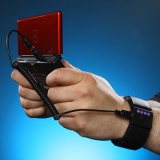See how mobile-photo-enthusiasts can take their creativity to the next level with an SLR camera.
Smart phones like the iPhone have changed the way we communicate with each other. Mobile phones with camera features have introduced many people to the world of photography.
To deal with the limitations of mobile phones, many apps have been introduced. However, using an app to ‘fix’ an image taken with a mobile phone only masks the faults and limitations of the phone hardware.
SLR cameras grant users an exciting level of creative freedom, and quality of images that simply cannot be matched by mobile phones. For those smart phone owners who have had a taste of photography and are looking for more, we look into the photos that your mobile phone simply cannot take.
Click any image to see the full-size versions to really compare the differences
#1 Fast Shutter Speed
Ever wonder why some pictures taken at kids birthday parties have all sorts of colourful blurs where there should be happy children? This happens when a camera’s shutter speed is too slow to capture a scene with movement. Mobile phones do not offer much control for the user in this respect. When there are options for controlling shutter speed, they are extremely limited.
Most entry level SLR cameras can capture pictures at up to 1/4000thof a second! The faster the shutter speed, the more “frozen in time” the image will look. Modern phones automatically do what they need to do in order to achieve the “best” picture. This often results in unwanted images. SLR cameras allow users to have full control over shutter speed with just a flick of the wrist.
#2 Long Exposure
There are few things quite as enchanting as a glowing city skyline at night. Ever try to snap a quick photo, only to see bunch of little squiggly lines? Sometimes with luck, one might get a photo that kind of looks like the city, except with blue and gray sprinkles everywhere. These are not the same kind of delicious sprinkles found on donuts and cupcakes. These sprinkles are referred to as “noise” or “grain”, and they definitely do not make the picture look good.
SLR cameras allow users to take “long exposures”, which means the camera is taking a photo for a few seconds, or even a few minutes! This lets users take amazing photos at night, where there doesn’t seem to be any light at all.
Taking night pictures isn’t the only cool thing SLRs can do. Long exposure shots allow anyone with a flashlight or torch write out cool messages or draw silly pictures. Ever wonder how some people are able to take mystifying photos with blurry ferris wheels or misty oceans and waterfalls? How about those star-filled night sky photos? The answer is long exposure photography! Continue reading










